It’s been said that danger lurks around every corner. This is never more true than on the road. Crashes can, and do, occur on any street, regardless of location, condition and speed limit. But not all roads are created equal. While some may have danger around the corner, others have danger all around. All this danger can make for some hair-raising drives.
Roads can be scary for a variety of reasons. Some travel through hazardous terrain, while others are so flat and straight they become breeding grounds for speeding and unsafe driving. You’ll find dangerous roads from coast to coast, in crowded metropolises and areas so remote they’re difficult to access.
Here’s a look at some of the scariest, nerve-racking roads in America.
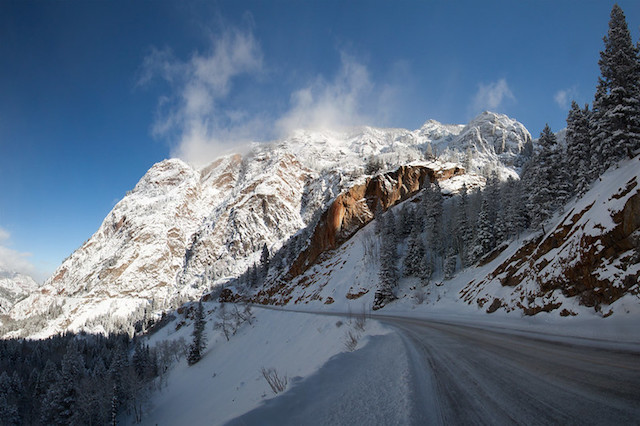
Million Dollar Highway, Colorado
Officially known as U.S. Route 550, local legend says Colorado’s Million Dollar Highway got its moniker after an early traveler proclaimed she’d have to be paid $1 million to drive it again.
Winding through Red Mountain Pass in the San Juan Mountains, the roadway is undoubtedly one of the most breathtaking in the country. But those stunning views don’t come easily. You’ll encounter steep cliffs and hairpin turns as you climb the highway more than 11,000 feet above sea level. If that’s not unnerving enough, the road, carved into the side of the mountains, has no guardrails. Throw in some harsh Colorado weather and the occasional rock slide and you have one of the most dangerous roads in the country, according to a list compiled by USA Today.
U.S. Route 1, Florida
Florida doesn’t have Colorado’s mountains, but it does have another lurking danger: It’s one of roughly half the country’s states without a full ban on using a handheld cellphone while driving. That might help explain why a recent study found that 17 of the 100 deadliest roads in America were in the Sunshine State, the most in the country. The research, which looked at death totals from 2015 to 2019, found Florida’s section of U.S. 1 to be the country’s second deadliest road. In total, 87 people died there over that time.
Most of the route up the eastern coast is straight as an arrow, inviting drivers to reach dangerous speeds. The southern end, known as the Overseas Highway, connects the Florida Keys to Miami. It consists of miles and miles of bridge driving, something many people find distracting or unsettling.

Lake Pontchartrain Causeway, Louisiana
At nearly 24 miles long, the Lake Pontchartrain Causeway holds the Guinness World Record for longest bridge over water. Depending on how you feel about driving for a half-hour suspended over a lake, the causeway can be a thrilling or nerve-racking experience. When you get toward the middle of the bridge, where dry land is completely out of view, it will likely veer toward the latter.
Being surrounded by water also leaves drivers open to the elements: The causeway can become enveloped in fog so thick that police have to usher drivers across the lake.
I-4, Florida
Interstate 4 between Tampa and Daytona Beach was once found to be the deadliest interstate in the country, recording 1.41 fatalities per mile. One explanation for the road’s high incident rate could be its route directly through Orlando, one of the country’s premier tourist destinations. “What’s the first thing they do when they get off the plane?” Glenn Victor of the Florida Safety Council asked Fox 35 Orlando. “They rent a car that they’re not familiar with and they’re on their GPS, so they’re looking at the phone and their GPS which, of course, is a distraction while they’re driving.”
I-45, Texas
Some roads are innately dangerous because of how they were designed or the terrain they traverse. Others are dangerous simply because of how many drivers use them – and the number of ensuing crashes they cause. The congested Galveston to Dallas section of I-45, which runs through downtown Dallas, was recently named the deadliest road in America by Budget Direct. Citing heavy traffic and driver complacency, the company found I-45 averages 56.5 fatal accidents for every 100 miles of roadway.
I-10, Arizona
Interstate 10 spans the width of the country, stretching from Jacksonville, Fla., to Santa Monica, Calif., but it’s the roughly 300-mile stretch through Arizona that has proven most foreboding. The highway’s long, straight stretches through the desert are hot spots of high speeds, aggressive driving, illegal passing and inattentive drivers. Nearly 500 fatalities were recorded on Arizona’s I-10 over a recent six-year period.
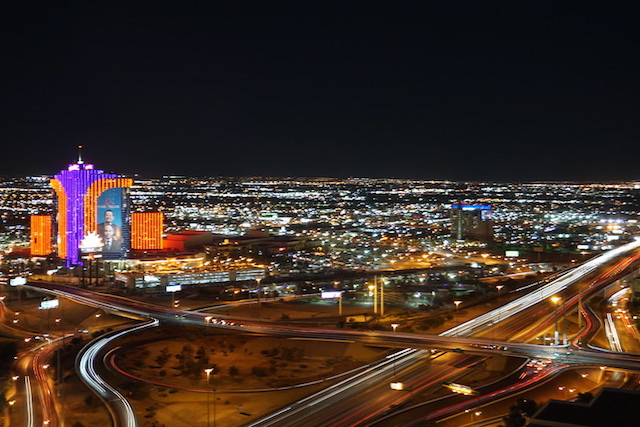
I-15, Nevada and California
The 181-mile stretch of Interstate 15 connecting Las Vegas and Los Angeles is a straight, well-maintained roadway, conducive to safe traveling. And yet, it routinely ranks as one of the country’s most dangerous roads. One study looked at data over a 15-year span and found it to be the deadliest roadway in the country.
The problem isn’t the road – it’s the drivers. Motorists often speed on I-15 while traveling through the openness of the Mojave Desert. The fact they are likely coming or going from the party city of Las Vegas doesn’t help either. The same study found that nearly a quarter of the crashes occurring on that section of the I-15 involved a drunk driver.
I-285, Georgia
Atlanta’s I-285 is known as “The Perimeter” because it circles the city in a 64-mile loop. It connects all the area’s interstates and highways and, in doing so, welcomes an onslaught of traffic, including tractor-trailers. The combination of congestion, sharp turns, interchanges and large trucks has turned I-285 into a lethal stretch of pavement. In 2015, Vox calculated the road’s fatality rate at 3.5 per every 10 miles, which, at the time, made it the country’s deadliest interstate.
U.S. Route 17, South Carolina
Winding through forests, marshlands and oceanside towns, South Carolina’s Highway 17 is one of the most scenic drives in the southeast. But looks can be deceiving. The road is filled with an endless number of sharp, blind turns and narrow lanes. The area is also home as well as an abundance of wildlife, creating another potential driving hazard.
All told, U.S. 17 in South Carolina is one picturesque – but perilous – drive. In fact, one study named it the country’s most dangerous highway for summertime travel.
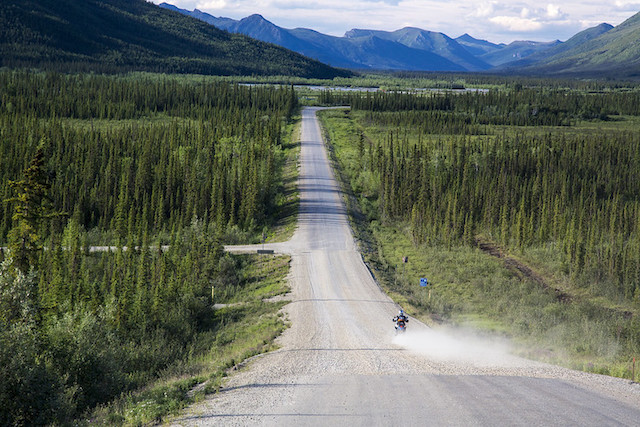
Dalton Highway, Alaska
The James Dalton Highway stretches 414 miles through the Alaskan wilderness from Fairbanks to Deadhorse, located on the shores of the Arctic Ocean. The dirt-and-gravel roadway was constructed in 1974 to help facilitate the oil industry and to this day is mostly used to transport oil.
The Dalton traverses through some of Alaska’s most treacherous terrain, including forests, tundras, steep grades and the Yukon River. Traveling along the road is so dramatic, in fact, it’s the focus of the hit television show “Ice Road Truckers.” But what makes the Dalton Highway particularly dangerous is its remoteness. There are only three towns along the entire route, which includes a 240-mile stretch without a single gas station or rest stop. Should something happen to you along the way, it may take a long time to get help.
Highway 2, Montana
Montana is the country’s fourth-largest state by size, but the eighth-smallest in population. This means you can drive for a quite some time before coming across anyone else. Open roads can lead to pleasant drives, but they can also be quite dangerous. Nowhere is this more true than on Montana’s Highway 2, which stretches east-west across the northern end of the state.
The roadway maintains a 70 mph speed limit, even as it winds through some mountainous regions. And while the scenic nature may be eye-popping, it also means you’re far away from the nearest help. In 2021, the median EMS call in Montana took a total of nearly 45 minutes. That number only gets higher when first responders have to travel to and from remote Highway 2.
Road to Hana, Hawaii
Driving around the islands of Hawaii seems like a journey through paradise, but be careful what you wish for, especially if you’re traveling along Maui’s Road to Hana.
The 52-mile road connects Kahului to Hana along the island’s rugged eastern shoreline. And though the highway offers picturesque views of mountaintops, lush greenery and crashing waves, the Road to Hana is far from a luxurious drive. Along the way, you’ll encounter a whopping 620 turns and 59 narrow bridges. The route requires such caution it takes motorists anywhere from two to four hours to complete. That’s why the Hawaii Tourism Authority recommends traveling with a permitted tour company instead.
Have you driven on any of these dangerous roads? Tell us in the comments below.
146 Thoughts on “Are These The Most Nerve-Racking Roads in America?”
Leave A Comment
Comments are subject to moderation and may or may not be published at the editor’s discretion. Only comments that are relevant to the article and add value to the Your AAA community will be considered. Comments may be edited for clarity and length.




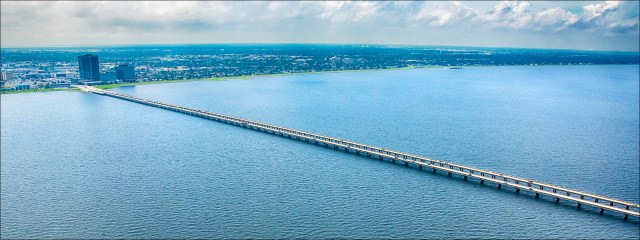











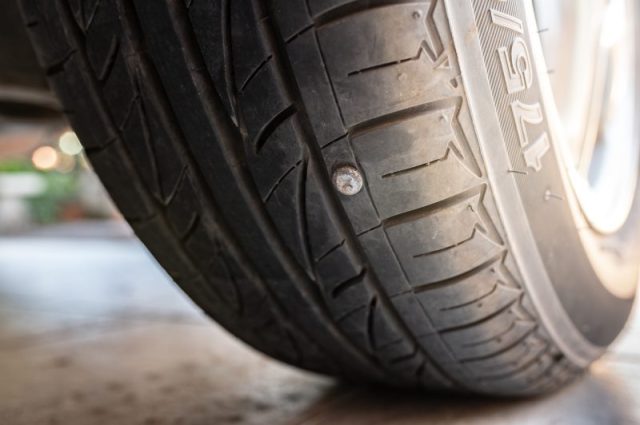


We live on hiway 128 in Mendocino county so we are used to windy roads.
Drove the road to Hana with my family many years past. Very beautiful and worth the drive. Don’t be in a hurry and give way to opposing drivers. Drove out Kahekili highway twice to watch the sunrise at the westen most point. Definitely a one lane road with no passing pullouts. Be real careful and drive a smaller car. One road that is quite exciting is the highway through Buller Gorge on the South Island NZ. One lane perched on girders on the side of a cliff above the Buller River. One curve under a rock overhang has a mirror do you can watch for opposing traffic. On the east side of the island you share one lane bridges across water ways with trains. Pay attention on the bridge approaches and take your time. A couple of them have curves on the bridge approach where a train can be hidden. Happy Trails.
I’ve driven over the Lake Pontchartrain causeway numerous times on my way to New Orleans from Texas. It’s the longest 30 or so minutes you’ll spend in a car. I’ve driven up to Pikes Peak in Colorado and several other high mountain roads in Colorado and none of those gave me anxiety like this endless bridge did.
Hwy 2 crossing Montana. One important fact that was left out was that until the mid-70s, there was no (I repeat NO) speed limit. The “official” understanding was that one should drive within the limits of safety in terms of traffic and road/weather conditions, and not having to worry about being stopped by Highway Patrol. This was the American version of the German Autobaun and it was not uncommon for cars to pass you doing 130+ MPH.
I have been on most of these roads more than once. The Million Dollar Highway is the most dangerous I have ever been on. I have crossed it three times, twice on a motorcycle and once in a vehicle. It is far more dangerous than the Tail of The Dragon in Tennessee and crossing into North Carolina. It has 318 curves in 11 miles. Neither is a road to drive unless you are a very skilled driver or motorcycle operator, and then you are still at the mercy of other drivers or riders. If you are a passenger while riding these two roads, you can enjoy the scenery. Operator cannot look away but for a second or two. The Bear tooth Mountain Passs from Red Lodge, Montana to Cooke City, Wyoming is also a challenge.
Fortunately, I live in Michigan where the roads are so bad that you can’t go too fast. If it’s not for the tremendous potholes that will destroy your vehicle, it’s the fact that there is so much road construction that you can’t actually get up to any decent speed. With all of the lane closures and detours you really spend most of your time trying to figure out how to get to where you’re going rather than actually driving.
Florida really has some of the most dangerous roads on pretty much every county, and the thought that they don’t have regulations on driving with no hand held phone laws make all the more dangerous. Beautiful state/beaches. That’s a pretty much cocky state overall, so be careful when driving there
It’s not the road that’s dangerous, it’s the driver. The article touched on it when mentioning FL I-4 and the Overseas highway. I have driven on the old version of the highway. It was built on top of a standard gauge railroad track so to say structurally it was dangerous would be true. See what happens when you limit yourself to a highway with no breakdown median.
After learning to drive in Florida, my parents moved up to Connecticut. In Fairfield County the roads, including I-95 were narrow and overcrowded until you were east of New London. However, it was the CT driver that was reckless and caused the accidents, not the driver. Note; this was before GPS.
Red Mountain Pass from Ouray to Silverton claimed the lives of my great grandfather and great aunt in the 1880s, and still is lethal in winter. However, I have driven the loop from Lake City up over Engineer Pass and back down Cinnamon Pass and found a retired couple in a rented Jeep CJ5, stopped in the middle of the road, crying because the drliver could not see how to navigate a tight spot in the road, at the 11,600 foot elevation. That road gives you a view of Ouray, where it leads on the West branch, and Red Mountain. Best to hire a driver on that one . Imogene Pass and Pearl Pass and Black Bear Pass over near Telluride are worse killers…flatlander beware!
The mMillion dollar highway going through the San Juans in Colorado is stunning. It would be dangerous to drive during a snowstorm. That aside, during good weather it’s a great road with incredible scenery. I would disagree with some of their comments regarding this road.
Highways in Montana are notoriously isolated. I think Highway two is so beautiful but absolutely it’s a lonely and desolate stretch, especially in the winter
In the 70’s before the new seven mile bridge in the Florida Keys was built I was driving west on the old bridge (US 1 Overseas Hwy) and had to stop to allow a car to pass before I turned left onto Pigeon Key. There was a slight curve on the bridge just before the exit onto the Key. My husband and I were rear ended by teenagers whom we had encountered in Marathon at a gas station bragging about the speed of their car. They immediately threw their beer over the bridge but it landed on the ground below ! And what good fortune that there was a Highway Patrolman who was exiting Pigeon Key at the time and was able to investigate. Several of us went to the hospital but no life threatening injuries, thank the Lord.
I am SO GLAD they have replaced the bridges in the Keys making them somewhat safer.
I-17 in Arizona. I dread taking that route when I want to
Travel from Phoenix to Flagstaff.
I totally agree about the 17
My Daughter died a year after an accident on I-15 close to Barstow California.
As a fairly new (3 year) resident of South Carolina I would put most roads here on that list for one reason. There are no shoulders to pull off on when driving on surface streets, which makes breaking down a recipe for disaster. You can be driving within the speed limit at a high rate of speed and come around a corner to encounter a line of stopped cars. The larger freeways do have shoulders, but add in the torrential rain, and it adds another degree of danger when you can’t see through the driving rain.
Schuylkill expressway. From the valley forge exit on the PA turnpike to Philadelphia
The “Sure Kill” Expressway ☠️. . Where the PA Turnpike ends and death begins.
The traffic there is so heavy it’s become more safe. I think US Rt 422 is taking over the distinction that the Schuylkill had!
I live just outside Orlando, and Ialways say I-4 is short for I-4Get-How-To-Drive. Not only is it crawling with tourists who don’t know where they’re going, but there always seems to be construction somewhere in the metro area. Recently, a ten-year project was completed, which included adding express toll lanes and rebuilding a number of exit ramps. While it was in progress, traffic patterns seemed to change on an almost weekly basis. The exit you took one day might be in a different spot or closed completely the next day. The combination of tourists unfamiliar with the area and confused locals trying to keep up with the changes were a recipe for disaster. And even now, residents are still getting acclimated to the new layour. Drivers abruptly cutting across two or more lanes are a regular occurrence. When you throw in the fact that most Floridians don’t seem to know what a turn signal is…yeah, it’s a miracle anyone ever gets off I-4 alive.
I live in Poinciana, and avoid I4 whenever I can. Eileen exactly described the problems, recently and currently.
The road to Hana didn’t seem so much dangerous as it was nauseating. The constant hairpin turns started to feel like a carnival ride, with accompanying nausea.
Totally agree, not sure how it can be deadly when the top speed you hit is about 15 mph. The smell of the flowers alone make the drive worth it though.
Sam, exactly my experience, too. Never made it to Hana. Turned around and headed back with stops along the way to settle waves of nausea.
I-10 in AZ is only dangerous because of the non-driving people who drive on it! It’s a basic interstate, but I have NEVER in 37yrs of life, seen such awful and clueless drivers! It often makes me wonder how many ppl on the road actually have things like brains or souls, and I swear, I am NOT being sarcastic! Zero intuition, zero consideration for others….it’s shockingly bad. After having to travel to AZ for a year for work, terrible drivers was in my top 5 reasons for not staying there permanently, and I’m from Chicago, where driving can be extremely intense. AZ beat us in the “bad driving” department by a LONG shot!
I drove on the Lake Ponchatrain bridge in 2003 in a tropical storm, this was before Katrina wiped the bridge out and it was considerably closer to the water.
I drove the road to Hana and loved it. I felt like Mario Andretti when I was done. A lot less scary than the road from Sedona to Jerome in Arizona.
I drive I-4 often, never had a problem. I’ve driven the road to Hana, loved it.